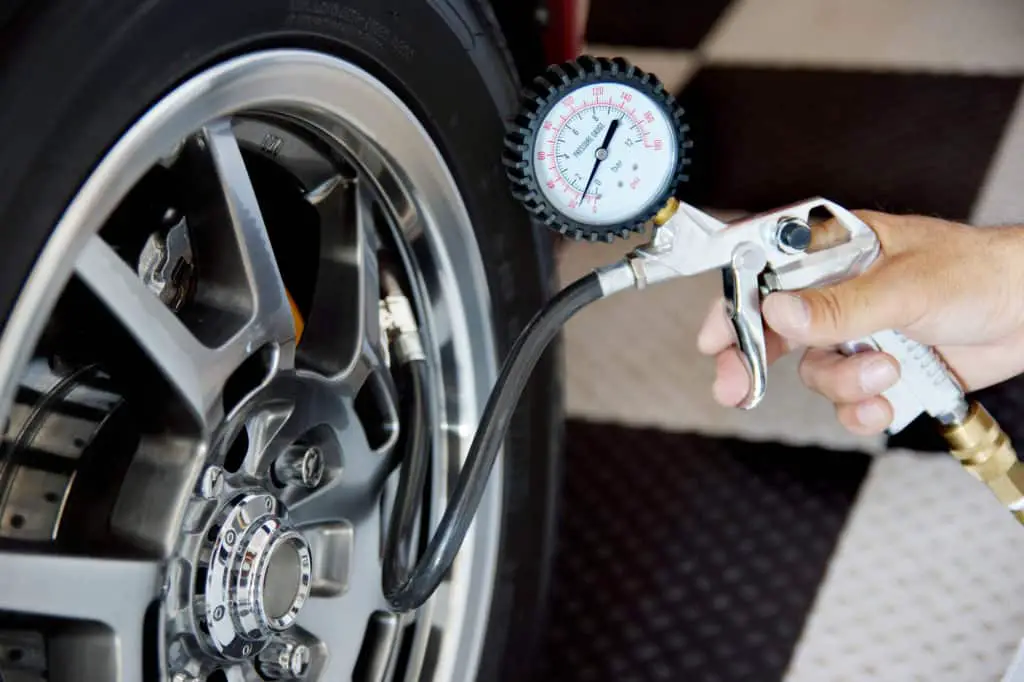
Nearly 10 percent of all car accidents happen because of faulty tires. Each year, 3,200 people are seriously injured in a car accident that was a direct result of poor tire pressure.
These statistics should inspire you to want to learn how to check tire pressure and inflate tires — if not for yourself, for the safety of your passengers and other people on the road.
Of course, we don’t want to scare you with too much doom and gloom!
So, now that we’ve gotten the frightening part of this article out of the way, let’s move onto talking about how to make sure you’re checking the pressure of and inflating tires correctly.
By the end of this post, we’re certain that you’ll have a newfound confidence in your at-home mechanic abilities.
Find the Right Inflation Level
Before you play mechanic, let’s make sure that you’re starting things off the right way.
The first thing you’ll need to do is to ensure that you inflate your tires to the right level.
You can determine your tires’ inflation level by learning out the weight restriction of your car and the specific amount of pressure tires need. You can find this information in your car’s manual or even on the sticker on the doorjamb.
Many novices think that they can find the right pressure by looking at the markings on the tire. Don’t be like them — you’re better than that.
Remember that the tire markings tell you the maximum pressure the tire can take, not what’s right for your car.
You’ll also need to invest in a tire pressure gauge. Luckily, this should only set you back about five bucks – unless you want to go for a digital reader.
Remember that, just because your tire isn’t obviously flat and making strange noises, it doesn’t mean it’s working properly.
The pressure gauge will give you an accurate reading of your pounds per square inch, or PSI for short.
Check out this video for more advice on how to use your tire gauge.
Master Putting Air in Tires
So, you’ve used your tire gauge and now you have to face the bad news that your tires are in need of a little inflation.
Unless you’re new at all things related to basic car maintenance, you can inflate tires pretty easily on your own.
First of all, make sure that your car is in the shade and on an even, flat surface. Then, unscrew the dust/valve stem caps and put them in your pocket immediately.
Trust us when we tell you that these tiny parts have an amazing talent for getting lost.
Now, you’re ready to pump.
You have two options here. You can buy a manual pump, such as a bike pump — as long as it’s Schrader-valve compatible.
Obviously, option one is going to take a while, so we suggest going with option two.
Head to your local gas station and look for a coin-operated automatic air compressor pump. This will take much less time.
You should also consider investing in an air pump that will plug into your car’s outlets – just in case of a future emergency.
Now, hook the pump’s hose up to the air valve, and start inflating.
Make sure that you hand onto the hose because you don’t want it to fly off of the air valve.
In general, once your tires reach anywhere between 30-35 PSI, you should be in good shape. You can use your gauge once again to see if you’ve gotten things right. Once you’re there, put the cap back on, and you’re ready to drive away!
Other Tips to Inflate Tires the Right Way
Now, let’s quickly cover a few other tire maintenance tips you need to know when checking the pressure and inflating your tires.
Many people have no idea that the temperature outside can actually seriously impact the pressure reading. When you think about it, it makes sense.
After all, the black tires are practically hard-wired to attract as much heat as is possible.
To ensure that the PSI reading you’re getting is actually accurate, we suggest that you take readings only in the shade. Make sure your tires have had the proper amount of time to cool down before you take a reading.
In other words, don’t turn off your car and immediately bend down to check the pressure in your tires.
Additionally, it’s a good idea to check them in the morning before you’ve even taken your car out at all that day.
Finally, because the days are a bit shorter and colder, you might need to check your tire pressure more often in the winter than in the spring and summer.
Looking for Additional Car Maintenance Advice?
We hope this post helped you understand that learning how to inflate tires isn’t as difficult as you initially feared it would be.
Make sure you determine how much tire pressure your car actually needs, invest in the right tools to make it happen, and check your pressure in the right conditions.
Of course, learning how to check tire pressure is just the first of many maintenance skills that you’ll need to master in order to keep your car in good working order.
Looking for more DIY car repair advice?
We’ve got you covered.
Check out our website to learn more and get honest, no-BS reviews on some of the best products!